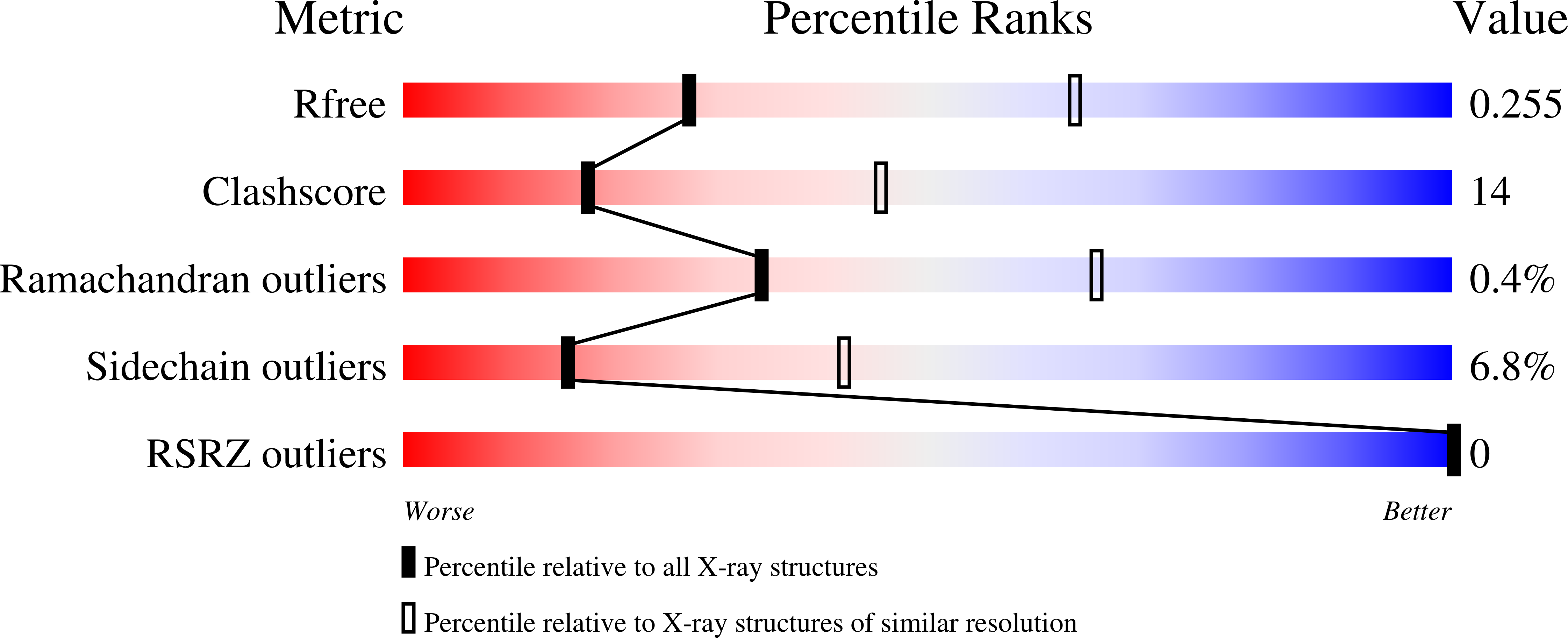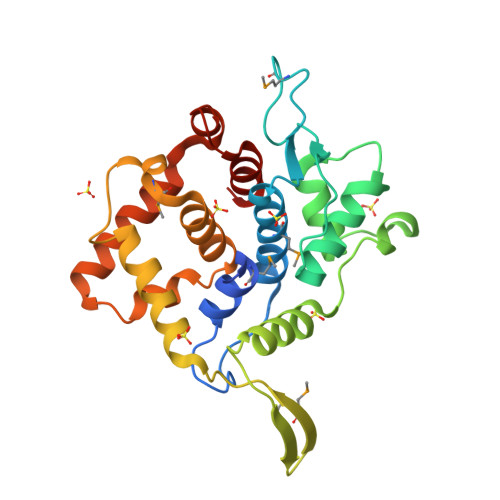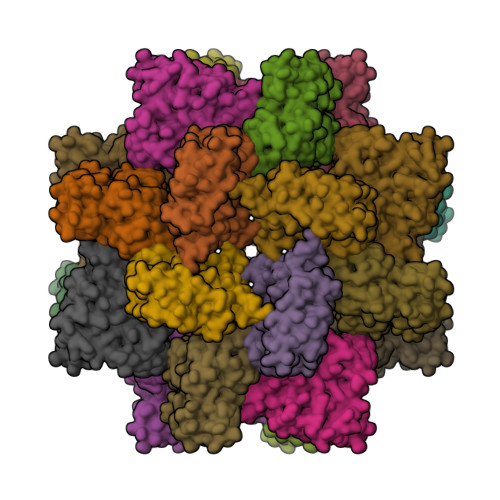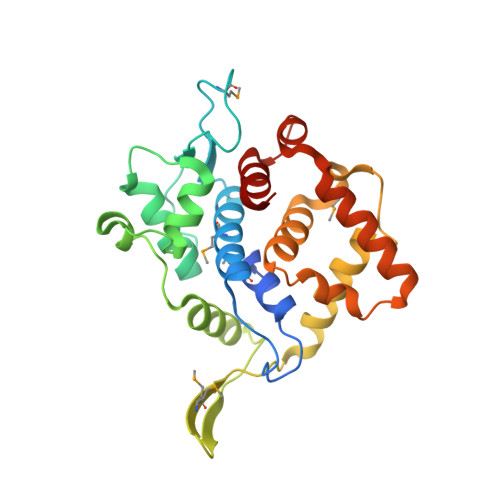PtdIns4P recognition by Vps74/GOLPH3 links PtdIns 4-kinase signaling to retrograde Golgi trafficking.
Wood, C.S., Schmitz, K.R., Bessman, N.J., Setty, T.G., Ferguson, K.M., Burd, C.G.(2009) J Cell Biol 187: 967-975
- PubMed: 20026658
- DOI: https://doi.org/10.1083/jcb.200909063
- Primary Citation of Related Structures:
3KN1 - PubMed Abstract:
Targeting and retention of resident integral membrane proteins of the Golgi apparatus underly the function of the Golgi in glycoprotein and glycolipid processing and sorting. In yeast, steady-state Golgi localization of multiple mannosyltransferases requires recognition of their cytosolic domains by the peripheral Golgi membrane protein Vps74, an orthologue of human GOLPH3/GPP34/GMx33/MIDAS (mitochondrial DNA absence sensitive factor). We show that targeting of Vps74 and GOLPH3 to the Golgi apparatus requires ongoing synthesis of phosphatidylinositol (PtdIns) 4-phosphate (PtdIns4P) by the Pik1 PtdIns 4-kinase and that modulation of the levels and cellular location of PtdIns4P leads to mislocalization of these proteins. Vps74 and GOLPH3 bind specifically to PtdIns4P, and a sulfate ion in a crystal structure of GOLPH3 indicates a possible phosphoinositide-binding site that is conserved in Vps74. Alterations in this site abolish phosphoinositide binding in vitro and Vps74 function in vivo. These results implicate Pik1 signaling in retention of Golgi-resident proteins via Vps74 and show that GOLPH3 family proteins are effectors of Golgi PtdIns 4-kinases.
Organizational Affiliation:
Department of Cell and Developmental Biology, University of Pennsylvania School of Medicine, Philadelphia, 19104, USA.





















